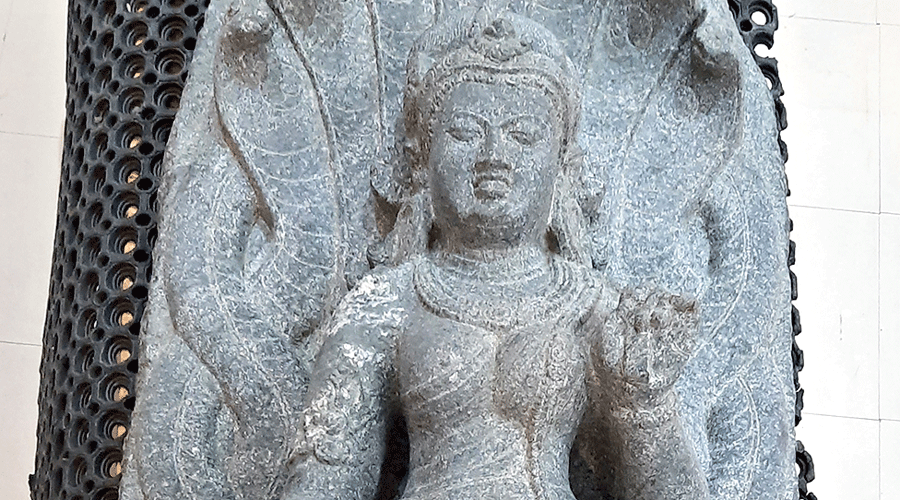A rare, completely intact 1,300-year-old Pala period idol has been found in a pond close to the ancient Nalanda University ruins in Bihar, taking archaeologists by surprise and highlighting the need for intensive exploration around the Unesco world heritage site.
The idol was found during the cleaning and desilting of a pond at Sarlichak village under the state government’s Jal-Jeevan-Hariyali (water-life-greenery) project to protect and conserve water and the environment.
An earthmover hit something hard while digging the bottom of the pond on March 30. It turned out to be a grey stone slab. When the people engaged in the work removed it, an idol was found beneath it, undamaged as the blow from the machine had been cushioned by the slab.
Villagers living in the area rushed to see the idol and started making plans to build a temple for it. Soon, Archaeological Survey of India (ASI) deputy superintending archaeologist Shanker Sharma, in charge of the Nalanda Museum, came to know about the discovery.
“We went to the place and rescued the idol from the people with the help of the local police. It was a difficult operation as the religious-minded people had already started worshipping it and were making plans to build a temple for it. The statue is a beautiful, rare and priceless one. It can be considered ‘life-size’ due to its height,” Sharma said.
The idol made of grey basalt stone is of Nag Devi (serpent goddess) sitting in Padmasana (a cross-legged yogic posture) on a lotus with prayer beads in one hand and an unidentified object, possibly a writing instrument, in another. It is 3ft-10in tall and depicts the deity being shadowed by seven hooded snakes entwined with each other.
“According to our experts this idol is of Nag Devi. Its iconographic features suggest that the idol was made in the seventh or eighth century AD during the reign of the Pala dynasty. The only other such exquisite statue of Nag Devi is at the Indian Museum in Calcutta,” Sharma told The Telegraph.
A Sanskrit inscription written in a proto-Devnagari script, a post-Brahmi script, on the back of the idol says it was “donated by Saint Fana Sen”. It seems the idol had been gifted to a local temple.
A team of ASI epigraphists from Mysore arrived at Nalanda and took prints of the inscription and other symbols for further study. The idol has been kept on display at the Nalanda Museum and is attracting a steady stream of local visitors.
Local government officials said terracotta brick walls had been found in the pond, but they had been damaged by the earthmovers. This indicates the presence of some structure or temple at the pond site.
The pond in which the idol was found is one of the 54 tanks, identified by British archaeologist Alexander Cunningham, which fed the ancient Nalanda University.
Nalanda Mahavihara or Nalanda University was established in the early fifth century AD during the reign of the Gupta dynasty. It became a famous seat of learning and used to attract students from different parts of the world. It was ransacked by Bakhtiyar Khalji in 1197AD, but was restored to some extent and continued till the 14th century.










